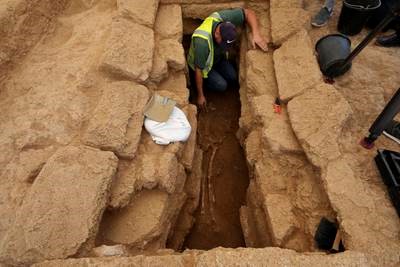Free Courses Sale ends Soon, Get It Now


Free Courses Sale ends Soon, Get It Now



Disclaimer: Copyright infringement not intended.
Context
Details
Discovery in the Gaza Strip
Importance of the Discovery
Introduction to Sarcophagi
Ancient Egyptian Sarcophagi
Roman Sarcophagi
Greek Sarcophagi
Christian Sarcophagi
Medieval and Renaissance Sarcophagi
Other Cultures' Sarcophagi
Conclusion
Sarcophagi continue to be essential artifacts in the study of history, art, and archaeology. They provide a window into the beliefs, aesthetics, and social structures of past civilizations. Ongoing research and discoveries related to sarcophagi contribute to our ever-evolving understanding of the past.
|
PRACTICE QUESTION Q. Which of the following statements about sarcophagi is true? A) Sarcophagi were primarily made of wood. B) Ancient Egyptian sarcophagi often featured scenes from daily life. C) Christian sarcophagi never incorporated pagan symbolism. D) Greek sarcophagi were used exclusively for cremation. Answer: B) |
© 2024 iasgyan. All right reserved